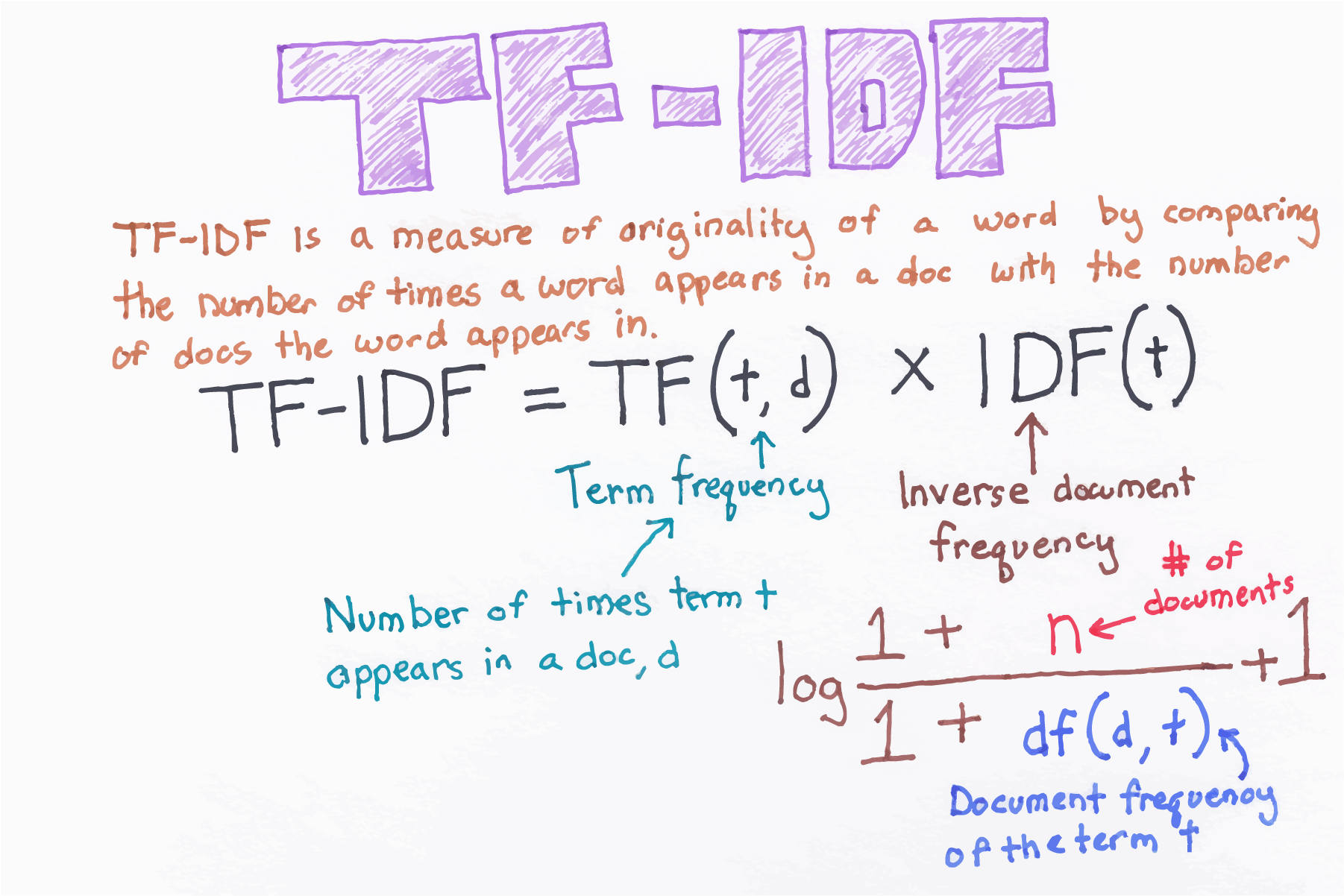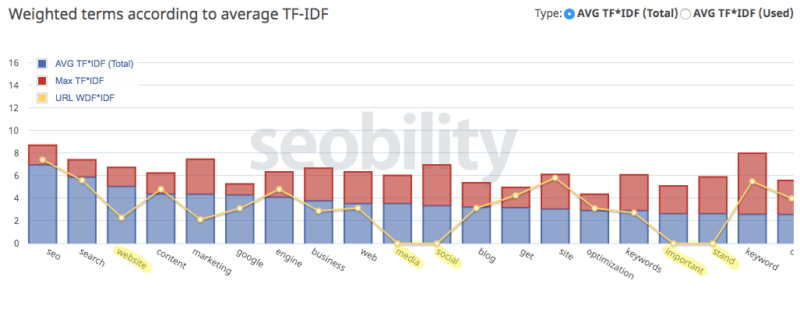tf-idf

In information retrieval, tf–idf or TFIDF, short for term frequency–inverse document frequency, is a numerical statistic that is intended to reflect how important a word is to a document in a collection or corpus. It is often used as a weighting factor in searches of information retrieval, text mining, and user modeling. The tf–idf value increases proportionally to the number of times a word appears in the document and is offset by the number of documents in the corpus that contain the word, which helps to adjust for the fact that some words appear more frequently in general. tf–idf is one of the most popular term-weighting schemes today. A survey conducted in 2015 showed that 83% of text-based recommender systems in digital libraries use tf–idf.
Variations of the tf–idf weighting scheme are often used by search engines as a central tool in scoring and ranking a document's relevance given a user query. tf–idf can be successfully used for stop-words filtering in various subject fields, including text summarization and classification.
One of the simplest ranking functions is computed by summing the tf–idf for each query term; many more sophisticated ranking functions are variants of this simple model.
Term frequency
Suppose we have a set of English text documents and wish to rank which document is most relevant to the query, "the brown cow". A simple way to start out is by eliminating documents that do not contain all three words "the", "brown", and "cow", but this still leaves many documents. To further distinguish them, we might count the number of times each term occurs in each document; the number of times a term occurs in a document is called its term frequency. However, in the case where the length of documents varies greatly, adjustments are often made (see definition below). The first form of term weighting is due to Hans Peter Luhn (1957) which may be summarized as:
The weight of a term that occurs in a document is simply proportional to the term frequency.
Inverse document frequency
Because the term "the" is so common, term frequency will tend to incorrectly emphasize documents which happen to use the word "the" more frequently, without giving enough weight to the more meaningful terms "brown" and "cow". The term "the" is not a good keyword to distinguish relevant and non-relevant documents and terms, unlike the less-common words "brown" and "cow". Hence an inverse document frequency factor is incorporated which diminishes the weight of terms that occur very frequently in the document set and increases the weight of terms that occur rarely.
Karen Spärck Jones (1972) conceived a statistical interpretation of term-specificity called Inverse Document Frequency (idf), which became a cornerstone of term weighting:
The specificity of a term can be quantified as an inverse function of the number of documents in which it occurs.



Comments
Post a Comment